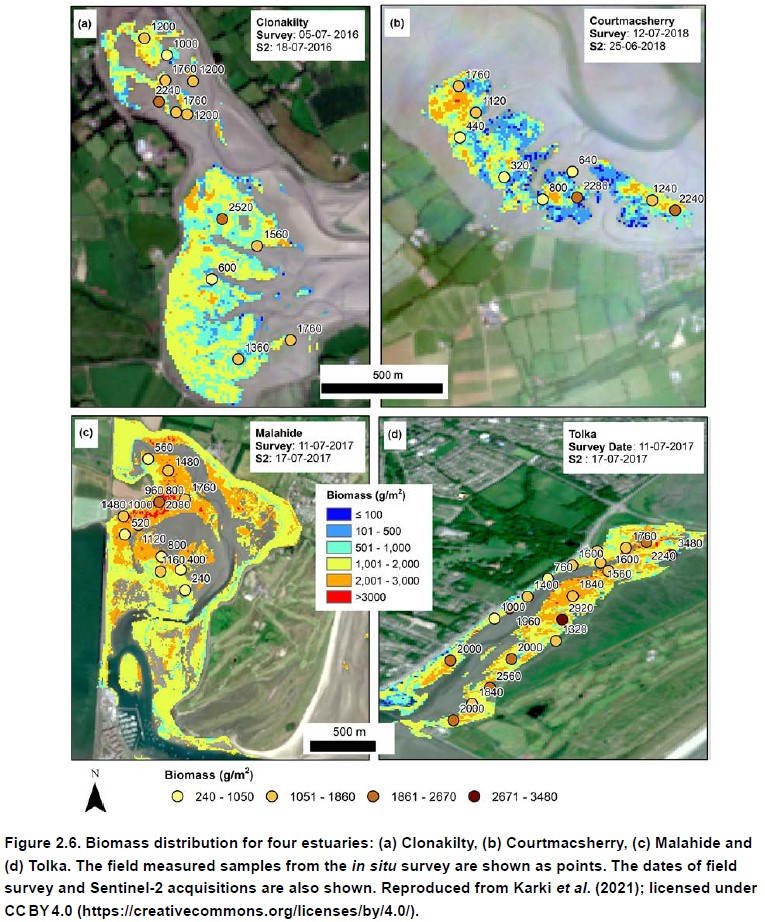The share of bathing sites with excellent water quality in…
New EPA Research Report 447: Macroalgal Blooms in Transitional and Coastal Waters; Management – Pressures, Policy, and Solutions
The EPA has published EPA Research Report 447: Macroalgal Blooms in Transitional and Coastal Waters; Management – Pressures, Policy, and Solutions. This research, led by the University of Galway, focused on Macroalgal blooms in transitional and coastal waters to develop and test innovative methods, including Earth observation technologies and bio monitors, to monitor and manage algal blooms
Eutrophication of waters and consequent algal blooms place significant pressure on marine ecosystems. Reducing the nutrient load of these waters is essential for ecosystem restoration.
The aim of the MACRO-MAN project was to develop innovative methods for the assessment of the environmental quality of Irish estuaries, and to identify drivers of and management strategies for macroalgal blooms. The potential risks associated with macroalgal blooms were considered in a global change context (e.g. climate change, emerging contaminants, biological invasions) in order to investigate the impact on ecosystem functioning and services provided by Irish estuaries.
Earth observation technologies from the European Space Agency and algorithms developed during the project were used to map the spatial and temporal distribution of brown, green and red macroalgal blooms in Irish estuaries, including the reconstruction of the invasion of a red Asian seaweed (Gracilaria vermiculophylla) in the Clonakilty estuary. Based on the nitrogen isotopic signature of the bloom-forming species, agricultural sources of nitrogen were the biggest drivers of blooms in rural locations, while effluent from wastewater treatment plants was more relevant in urban areas. Tissue nitrogen and phosphorus content indicated that anthropogenic nitrogen enrichment of aquatic environments has produced a shift from a nitrogen to a phosphorus-limited ecosystem.
Image from the report

Learn more:
Authors:
Ricardo Bermejo, Nessa Golden, Sara Haro, Sita Karki, Michéal MacMonagail, Sara García-Poza, Teresa Navarrete-Fernández, Benedikt Brunner, Kay Knöller, Mark Healy, Owen Fenton, Per-Erik Mellander and Liam Morrison







